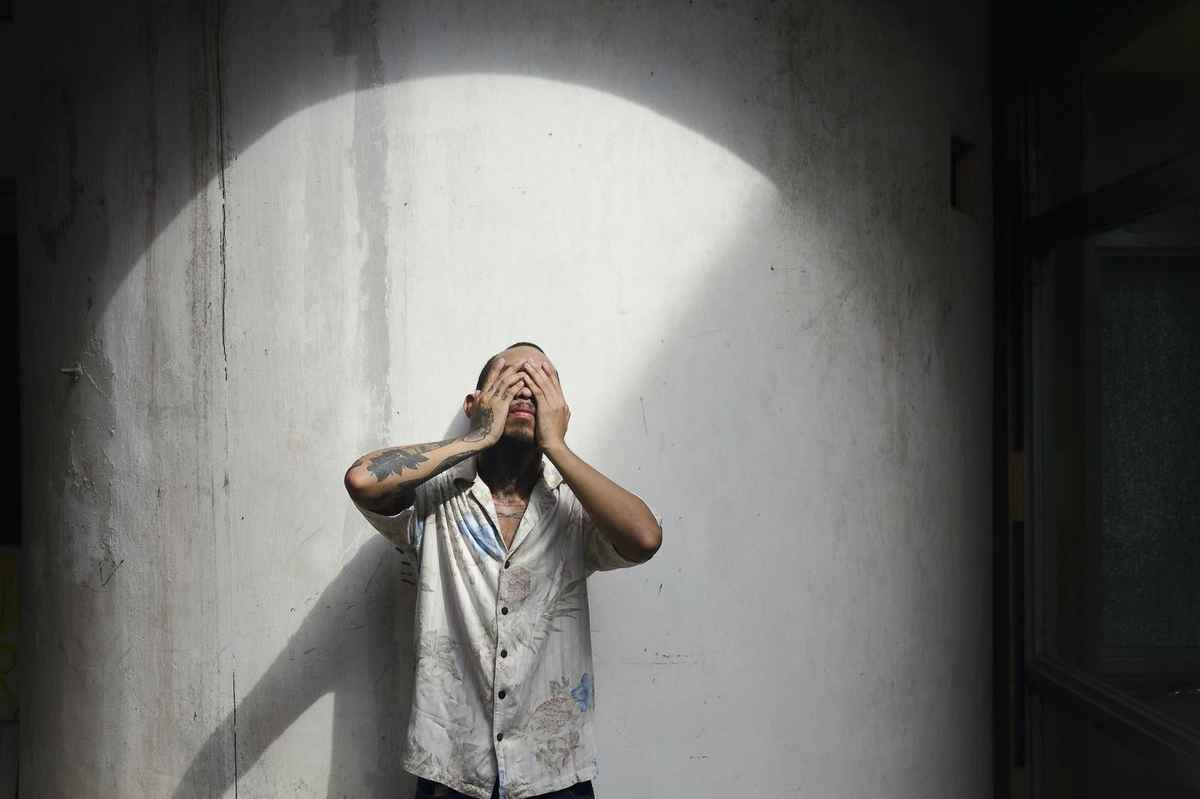Eye Socket Pain: Why Does My Eye Socket Hurt?
If you’re experiencing pain in your eye socket, it’s understandable to feel concerned or worried.
The good news is that most causes of eye socket pain are treatable, and quick-relief options are available to help you feel better.
In this article, let’s explore the common reasons behind eye socket pain and provide valuable tips on alleviating discomfort.
Ouch, my eye socket hurts!
Eye socket pain, or orbital pain, is a frequently reported symptom that can vary in intensity from minor discomfort to severe agony.
The symptoms of eye socket pain can vary greatly depending on the underlying cause. Common symptoms include
- Dull, throbbing aches around the eye
- Sensitivity to light (photophobia)
- Tearing or watery eyes
- Redness and inflammation
- A feeling of pressure or heaviness
In some cases, eye socket pain may be accompanied by additional symptoms such as blurry vision, headache, or fever.
These may indicate a more severe underlying condition requiring immediate medical attention.
Light sensitivity
Photophobia, or light sensitivity, is a common cause of eye socket pain.
It occurs when the eyes become overly sensitive to light, leading to discomfort or pain.
Various factors, including eye inflammation, migraines, or exposure to bright lights for extended periods, can cause this sensitivity.
Dry eyes
When the tear glands fail to produce sufficient tears to lubricate the eyes, it can result in dry eye syndrome, which can cause discomfort and pain in the eye socket.
This can result in discomfort, redness, and irritation.
Glaucoma
These eye conditions can cause damage to the optic nerve, frequently due to heightened pressure within the eye.
Elevated pressure within the eye can lead to various symptoms, including pain in the eye socket, blurred vision, halos around lights, and a gradual loss of vision over time.
If left untreated, this pressure can have severe consequences, including damage to the optic nerve and permanent vision loss.
Sinus infection
Sinus infections, or sinusitis, can cause eye socket pain due to the inflammation and swelling of the sinus cavities around the eyes.
This may cause a persistent, aching pain that may feel dull or throbbing.
In addition to this pain, other symptoms such as nasal congestion, facial discomfort, and fever may also be present.
Getting to the root cause of your eye socket pain
Eye socket pain, also known as orbital pain, can be caused by a variety of factors.
Because of this, the scope of diagnosis tools is also wide and can include the following;
Tracing your medical history medical history
A detailed medical history helps healthcare providers understand the patient’s symptoms, identify potential risk factors, and determine if there is a history of eye-related conditions.
Patients should be prepared to discuss the onset, severity, and duration of their eye socket pain and any additional symptoms or past medical issues that may be relevant.
Getting a complete physical examination
A physical examination of the eye and surrounding structures can reveal signs of inflammation, infection, or injury.
The healthcare provider may assess visual acuity, eye movement, and pupil response to light.
Sometimes, they may also examine the patient’s sinuses and nasal passages to identify any issues contributing to eye socket pain.
Diagnostic tests
X-rays, CT scans, or MRIs may identify structural abnormalities or provide a clearer picture of the affected area.
These tests can help reveal issues such as sinus infections, tumors, or fractures that may be causing eye socket pain.
Treatment options for eye socket pain
1. Pain relievers
If you’re experiencing mild to moderate eye socket pain, over-the-counter pain relievers such as ibuprofen can help.
These medications can help alleviate discomfort and reduce inflammation in the eye socket.
For more severe pain, a healthcare provider may prescribe stronger pain medications.
2. Antibiotics
Antibiotics may be prescribed if the eye socket pain is caused by a bacterial infection, such as sinusitis or an eye infection.
3. Anti-inflammatory medications
Nonsteroidal anti-inflammatory drugs (NSAIDs) are a potential solution for reducing inflammation and providing relief.
Depending on the severity of the condition, these medications may be available over the counter or via prescription.
4. Warm compresses
This may soothe eye socket pain, especially in dry eye or sinus-related pain.
The warmth increases blood flow to the area and can help reduce inflammation.
5. Resting the affected eye
Resting the eye by reducing screen time, avoiding bright lights, and taking breaks from activities that require intense focus can help alleviate eye socket pain caused by eye strain or overuse.
6. Surgery
In severe cases where conservative treatments are ineffective and a structural issue or advanced glaucoma causes eye socket pain, surgery may be necessary to address the underlying problem and relieve pain.
Prevent eye socket pain with these tips
1. Managing allergies
Allergies can cause eye socket pain due to inflammation and irritation.
To manage allergies, identify and avoid allergens, use over-the-counter or prescription antihistamines, and consider using allergy eye drops to reduce redness and itching.
Regularly cleaning your home to minimize allergen exposure and using air purifiers can also help keep allergies under control.
2. Avoiding eye injuries
Protecting your eyes from injury is crucial for preventing eye socket pain.
Always wear protective eyewear when participating in sports, doing DIY projects, or working with chemicals.
By safeguarding your eyes from potential hazards, you can significantly reduce the risk of eye socket pain due to injury.
3. Taking breaks from digital devices
Prolonged use of digital devices, such as smartphones, computers, and tablets, can cause eye strain, leading to eye socket pain.
Other ways to minimize eye strain include adjusting your screen brightness, increasing the text size, and maintaining proper posture.
Blue light glasses can help alleviate eye socket pain by reducing eye strain caused by prolonged exposure to blue light emitted by digital screens, which can contribute to eye fatigue and discomfort.
By blocking blue light, these glasses can help reduce eye strain, dryness, and irritation, leading to less eye socket pain.
4. Managing stress
Stress can contribute to eye socket pain by aggravating eye strain, headaches, and tension.
Another method is to practice relaxation techniques such as meditation to help calm your mind and body.
Ensuring enough sleep is essential for overall well-being and can help reduce stress levels.
5. Maintaining good eye hygiene
Following a few simple practices is essential to keep your eyes healthy.
Before touching your eyes or handling contact lenses, washing your hands with soap and water is crucial.
Also, be sure to remove any eye makeup before going to bed to prevent irritation or infection.
And remember to regularly replace your contact lens solution to maintain optimal cleanliness and avoid contamination.
If you are experiencing dry eyes, use artificial tears or hydrating eye drops to keep your eyes’ moisture levels.
Getting the correct prescription lenses may help alleviate eye socket pain by correcting vision problems that may be causing eye strain or fatigue.
When the eyes work harder to focus, it can lead to discomfort, headaches, and even pain in the eye socket.
Certain prescription lenses can alleviate eye strain and fatigue by minimizing glare and improving contrast.
Prioritize prevention: a proactive approach to eye socket pain
You’ve probably realized by now that eye socket pain can have many causes, like light sensitivity, dry eyes, glaucoma, sinus infections, and more.
Sure, diagnosing and treating eye socket pain is essential for relief and keeping your eyes healthy, but let’s remember that prevention is where it’s at.
This includes managing allergies, avoiding injuries, taking screen breaks, managing stress, and maintaining good eye hygiene.
By putting prevention first, you’re setting yourself up for long-term eye health, less reliance on medical intervention, and a life free from eye socket discomfort.
If you have persistent or severe eye socket pain, don’t hesitate to contact a healthcare provider or eye care professional for a proper diagnosis and treatment plan.
But remember, the key is to protect your eyes and prevent eye socket pain before it starts.

Written by:
Angie Garcia
















